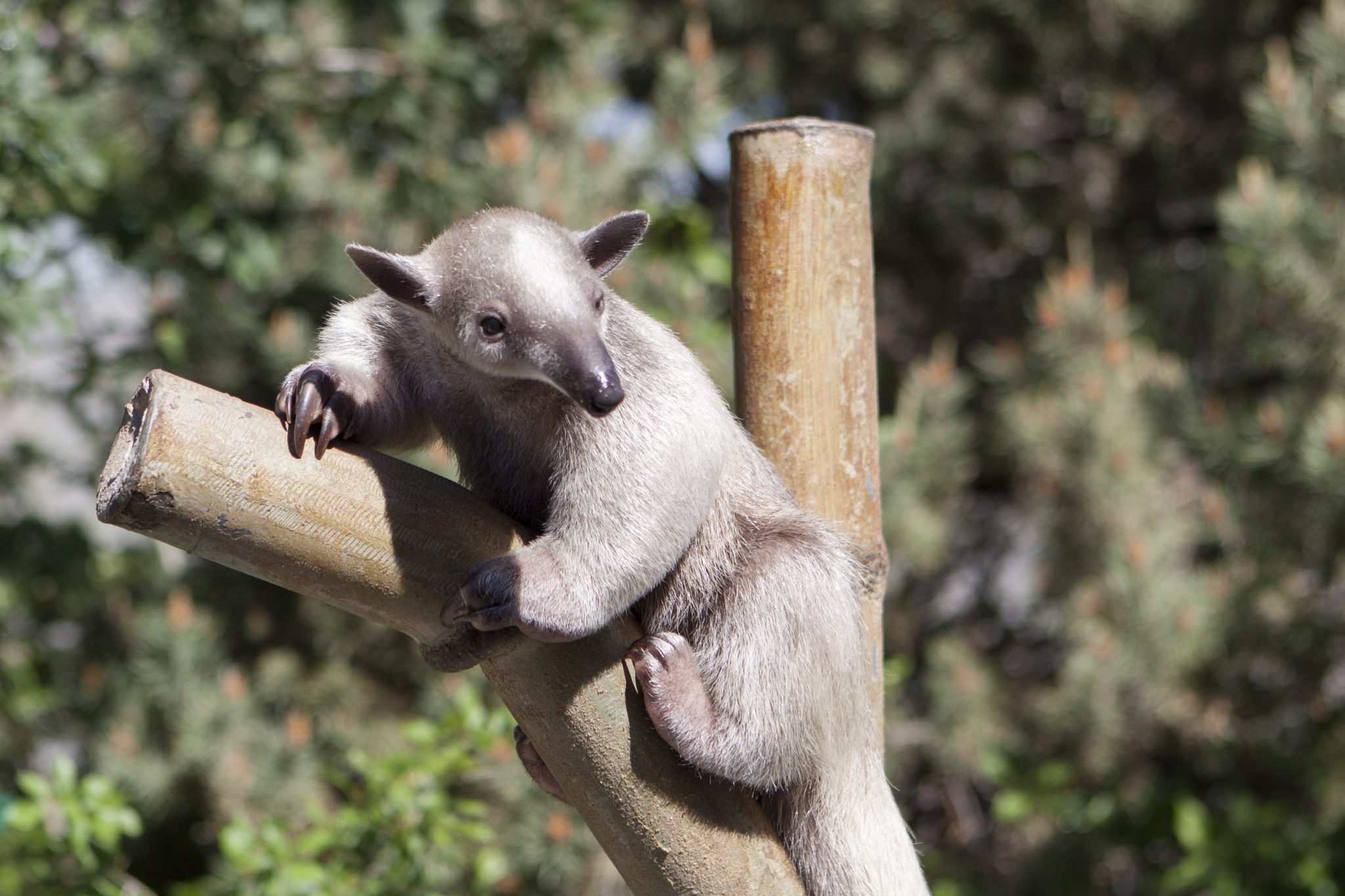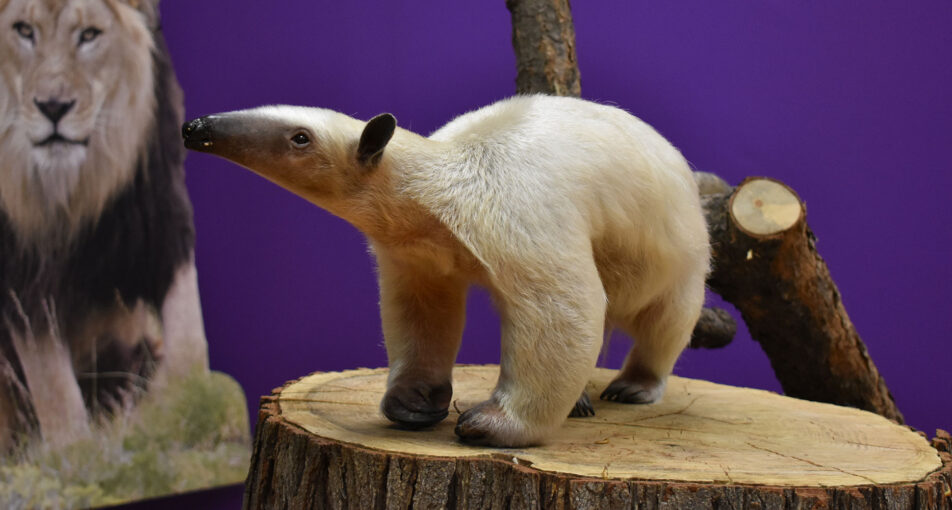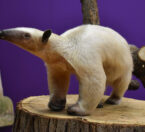The southern tamandua, also called the lesser anteater or the collar anteater, are solitary animals aside from mating. Tamanduas feed on ants and termites, avoiding ants with strong chemical defenses such as army ants. They have also been known to occasionally eat honey, bees and fruit. Their long, sticky, barbed tongue can get into ant and termite homes and lick them up.
Classification
| CLASS: | Mammalia |
| ORDER: | Pilosa |
| FAMILY: | Myrmecophagidae |
| GENUS: | Tamandua |
| SPECIES: | T. tetradactyla |
Habitat & Range
The southern tamandua is found throughout much of South America. Widely distributed in Guyana, Trinidad, Suirname, French Guiana, Brazil, and Paraguay. Also found in some parts of Uruguay, Argentina, Bolivia, Peru, Ecuador, Colombia and Venezuela. Four subspecies of Tamandua tetradactyla have been identified.
Active on both the ground and in trees, southern tamanduas are adaptable to a variety of habitats from sea level to 6,500 ft (2,000 m). Habitats include savanna, shrubland, and lowland and tropical rain forests. They are commonly found near streams and rivers.
Location


Adaptations
- Equipped with a chemical defense system to detect and avoid ants that sting.
- Dense fur helps to protect skin from biting ants.
- Stomach is specially adapted to digest insects efficiently.
- Primarily night hunters, tamanduas’ vision is poor, but hearing and sense of smell are good.
- Large claws and powerful forearms can be used in defense against predators. Claws are also used to rip open insect homes.
- Another defense mechanism is the ability to hiss and spray a foul-smelling secretion that smells worse than a skunk’s spray. This behavior has earned them the nickname of “stinkers of the forest.”
- The hairless tail is prehensile enabling it to grasp and hold tree branches. The tail is also used to balance on the back feet when standing upright.
- Long, sticky, barbed tongue can get into ant and termite homes and lick them up.
Physical Description
- Short dense fur is typically golden or tan but sometimes black in color. Although fur color can sometimes be a solid color, it is typically a light color with markings that look like the animal is wearing a black vest. Markings can also vary in black or in a lighter color on chest, shoulders or back.
- Feet have enormous claws up to 4 inches (10 cm) long – four claws on the front feet with one extra-long claw on the third toe, and five toes on the hind feet. These large claws require them to walk on the outsides of their feet which makes them slow and clumsy on the ground.
- The snout is long and curved downward with a very small opening about the size of a small stick.
- Tongue is long and round, up to 16 inches (40 cm), and covered with small barbs and sticky saliva. The mouth has no teeth.
- Eyes are small, and round ears protrude from the sides of the head.
- Body length is typically between 21 and 35 inches (53 to 89 cm). Tail length is between 15 and 23 inches (38 to 58 cm). The underside of the tail lacks fur.
- Adult average weight is about 10 pounds (4.5 kg). There is no significant difference in female and male size.
Diet
What Does It Eat?
In the wild:
Insects and a variety of small invertebrates.
At the zoo:
A variety of worms and insects
What Eats It?
Jaguars, pumas, margays (small wild cat), and large raptors

Social Organization
The southern tamandua, also called the lesser anteater or the collar anteater, are solitary animals aside from mating. Tamanduas communicate sexual condition and territories by scent marking from anal glands. Vocal communication, such as between mother and baby, includes hisses, snorts, roars and sniffs.
Life Cycle
Average life span is 9 years, but they can live longer in human care. Sexual maturity for females is between 2 and 3 years. Mating occurs in the fall, and gestation ranges between 130 and 150 days. Single births are the norm, but twins can occur. Young weigh slightly less than 1 lb. at birth and are a solid color. Babies are cared for only by the mother who will carry them on her back for several months. Young will stay with their mother for about 1 year at which time they are able to feed themselves.









